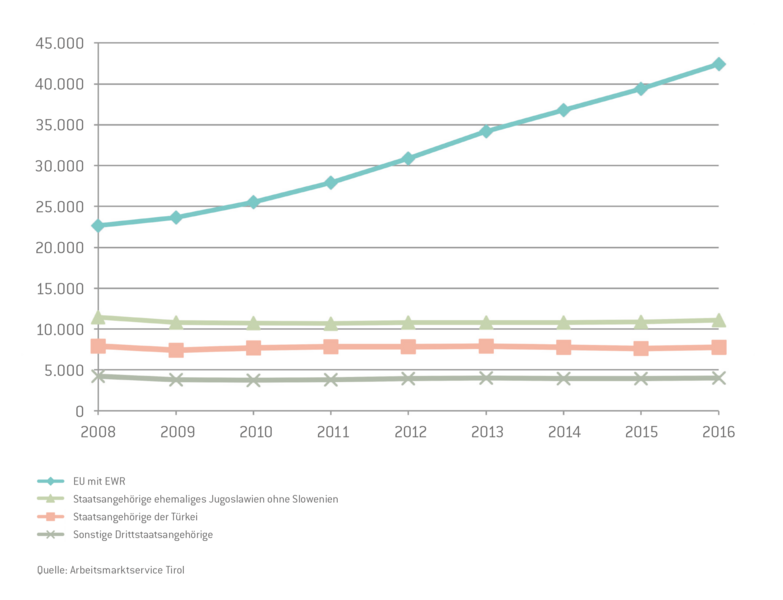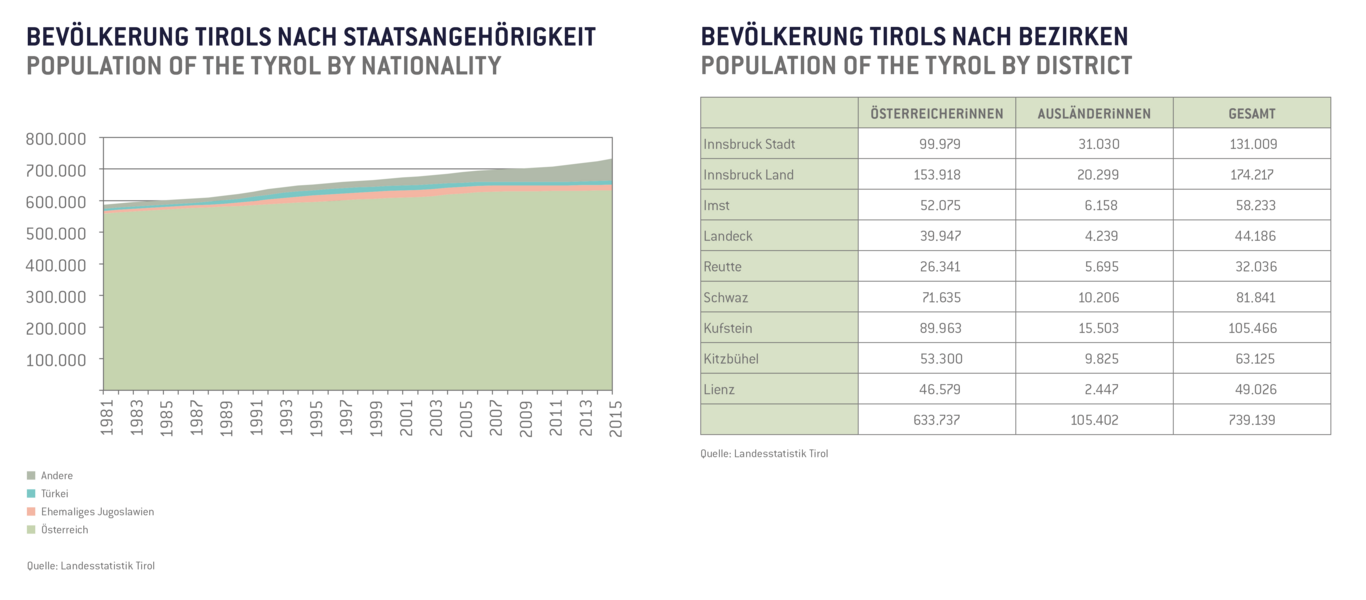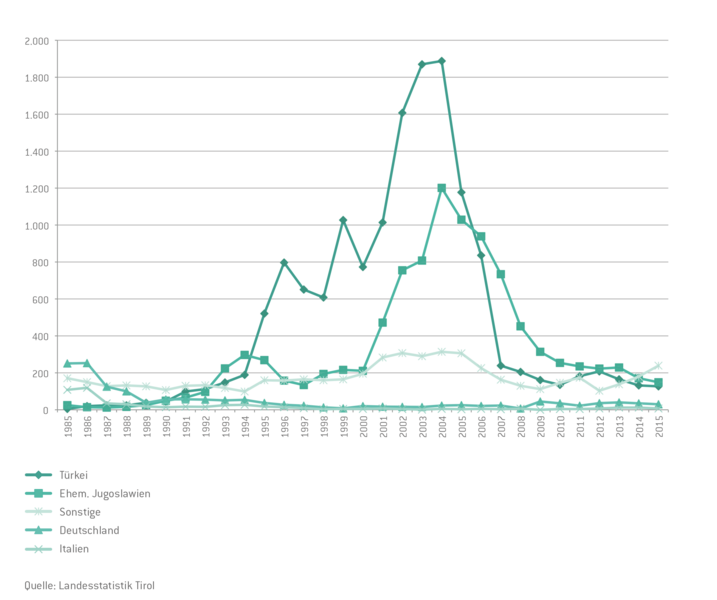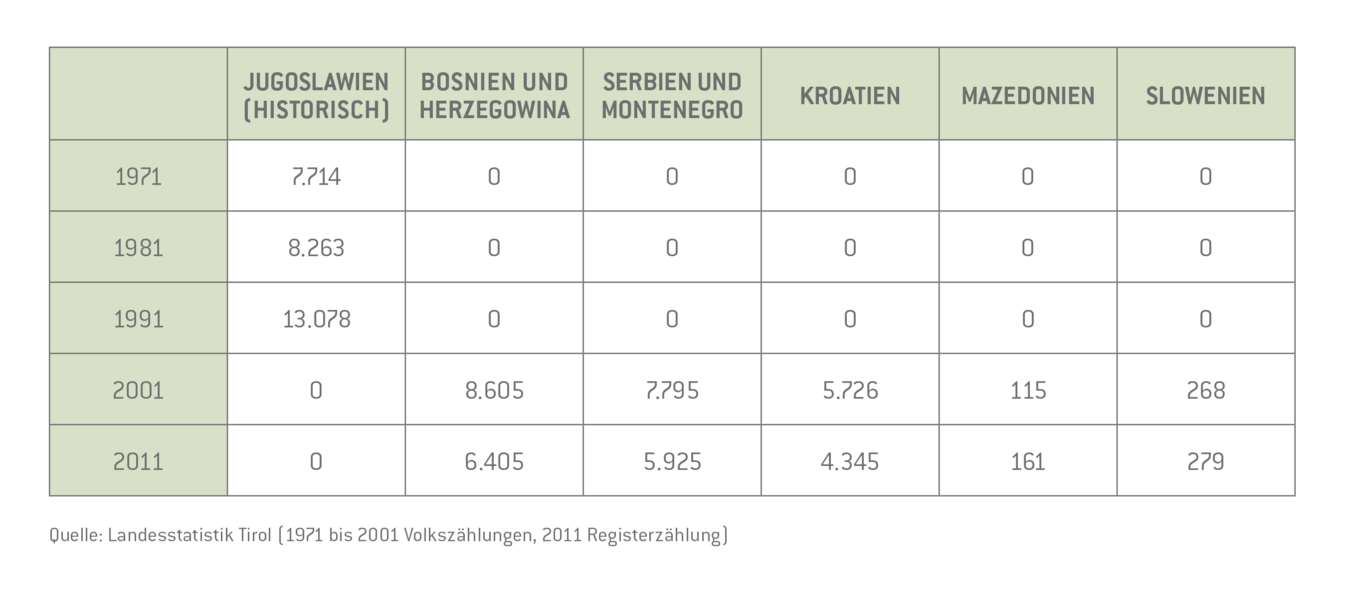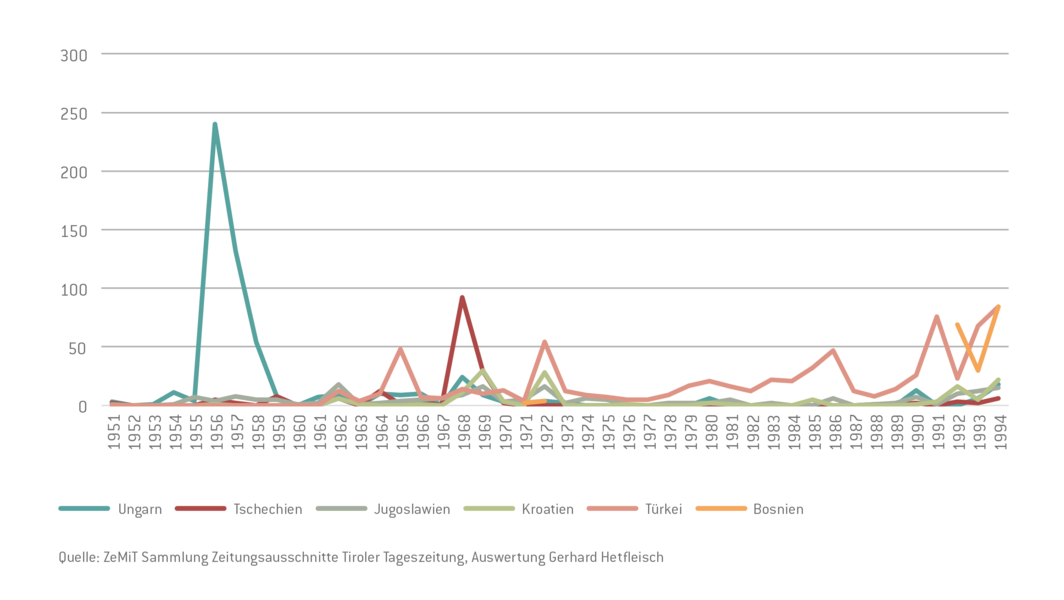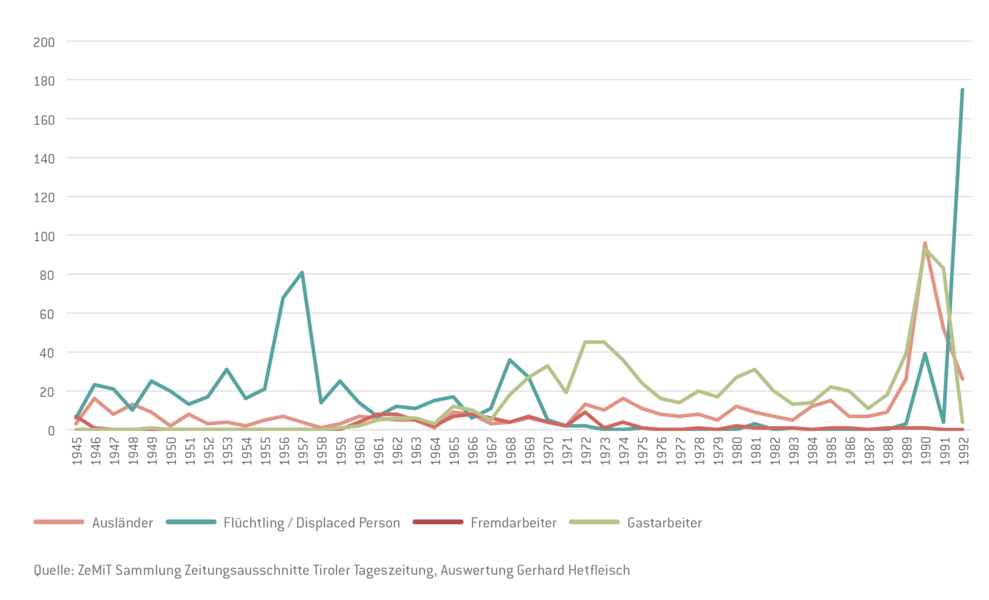Statistics
Net migration rate for the Tyrol
The net migration rate reflects economic and political factors. The chart shows the annual difference between the number immigrants to and the number emigrants from the Tyrol regardless of citizenship (balance of both internal and international migration flows). The negative net migration rate in 1975 ( -1,564) was primarily the result of restrictions on immigration (“Ausländerstopp”) imposed after the 1973/74 oil crisis.
Foreign employees in the Tyrol
Since the turn of the millennium, immigration and employment have stagnated in the case of third country nationals, i.e. persons who are not citizens of an EU member country (e.g. Serbia and Turkey). At the end of the 1990s, this group accounted for the majority of foreign employees in the Tyrol, but they have since been overtaken by EU citizens.
Naturalisation of foreign nationals in the Tyrol
For decades, the Tyrol had very low naturalisation figures. Until 1994, only about 500 persons per year were granted Austrian citizenship. The situation changed in 1995, when a huge increase set in, peaking at 3,431 naturalised persons in 2004. That was followed by a pronounced drop in the following years as a result of stricter rules imposed with the 2005 Citizenship Act.
Naturalisation of foreign nationals in the Tyrol by nationality
Naturalisation figures are also influenced by factors relating to the source country. In Yugoslavia, acquisition of a foreign nationality was frowned upon, an attitude that only changed following the disintegration of the federation. In the Philippines, on the other hand, emigration and – indirectly - acquisition of another nationality were encouraged by the Balikbayan programme introduced in the 1970s. A similar effect was created by the “mavi kart” introduced in Turkey in 1995. In both cases emigrants retained significant rights (in the fields of inheritance, real estate, residence, etc.) in their country of origin despite their change of citizenship.
Media analysis: nationalities
The frequency with which certain words are used in the media reflects attitudes towards political events. Analysis of migration-related articles in the “Tiroler Tageszeitung” reveals the frequency with which a nationality is mentioned. Events involving large number of refugees are especially prominent (Hungary, Czechoslovakia, Bosnia). What is interesting here is the comparison between Yugoslavia and Turkey. Although the number of arrivals of citizens of the former Yugoslavia in the 1960s and 1970s was much higher than from Turkey, the latter was the subject of more articles – a clear indication of stigmatising reporting.
Media analysis: changes in terminology
Words shape our perceptions, as an analysis of articles published in the “Tiroler Tageszeitung” shows: The term “Fremdarbeiter” (foreign worker), with its negative connotations in the context of National Socialism, was in general use until 1945/46 and then not until 1960 to the beginning of the 1970s. After that it was used only infrequently. After 1945 the neutral word “Ausländer” (foreigner) became the usual expression, especially from the end of the 1980s onwards. From the end of the 1960s to the beginning of the 1990s, “Gastarbeiter” (guest worker) was also a standard and very frequent expression. In addition to “foreigners”, the term “migrants” has been in use since the mid-1990s.


